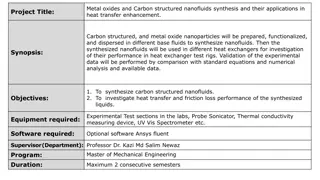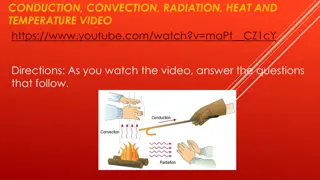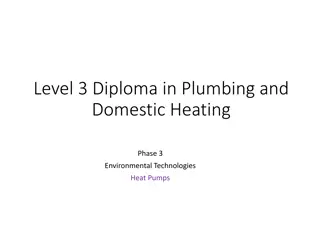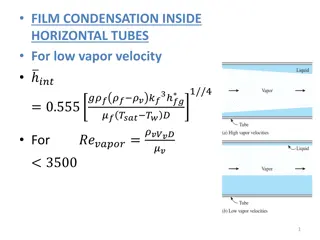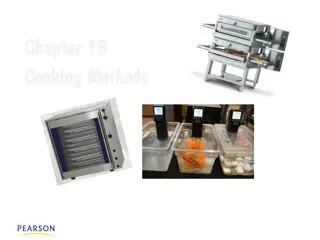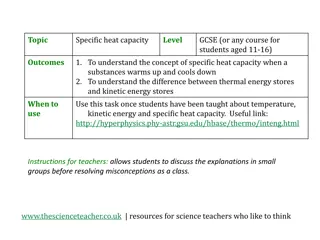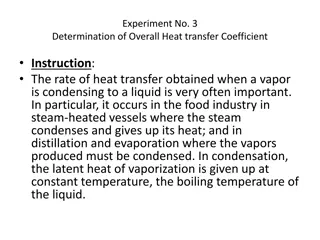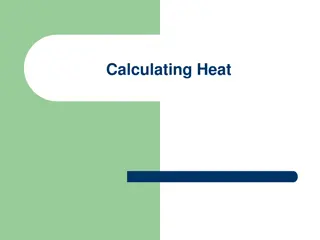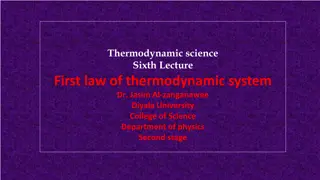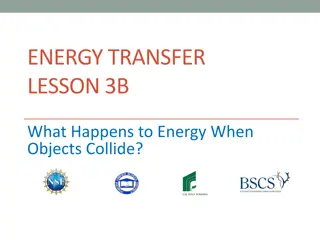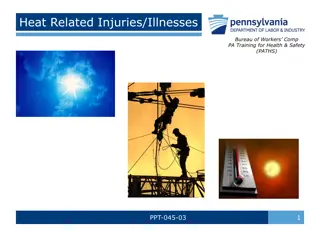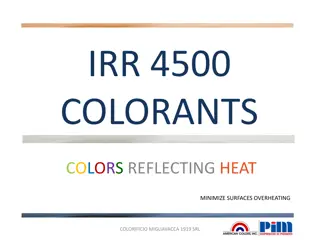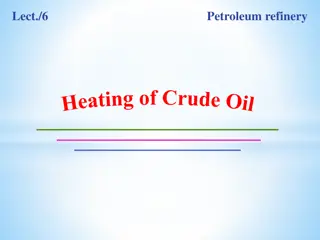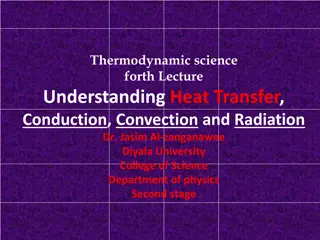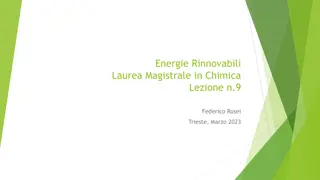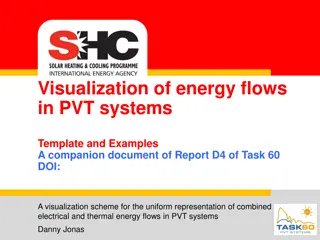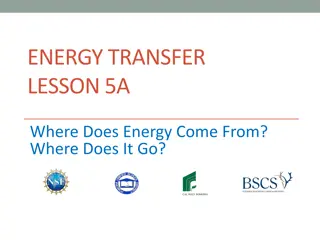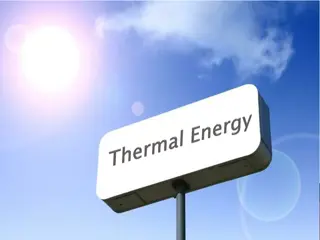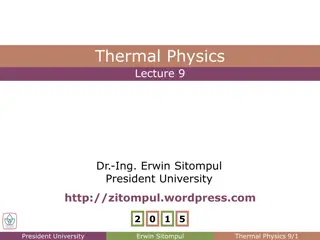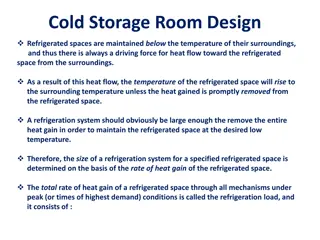Understanding Heat Energy Transfer and Principles
Heat energy is the result of particle movement in solids, liquids, and gases. It can be transferred through conduction, convection, and radiation. Conduction occurs through direct contact, convection involves the movement of fluids, and radiation transfers heat through empty space. Understanding how heat is transferred is crucial in various applications.
Download Presentation

Please find below an Image/Link to download the presentation.
The content on the website is provided AS IS for your information and personal use only. It may not be sold, licensed, or shared on other websites without obtaining consent from the author. Download presentation by click this link. If you encounter any issues during the download, it is possible that the publisher has removed the file from their server.
E N D
Presentation Transcript
What is Heat Energy ? Heat energy is the result of the movement of tiny particles called atoms molecules or ions in solids, liquids and gases. Heat energy can be transferred from one object to another, and the transfer or flow due to the difference in temperature between the two objects is called heat.
How is heat transferred? How is heat transferred? Heat can travel from one place to another in three ways: Conduction Convection Radiation. Both conduction and convection require matter to transfer heat. If there is a temperature difference between two systems heat will always find a way to transfer from the higher to lower system.
1. Conduction: 1. Conduction: Is the transfer of heat between substances that are in direct contact with each other. The better the conductor, the more rapidly heat will be transferred. Occurs when a substance is heated, particles will gain more energy, and vibrate more. These molecules then bump into nearby particles and transfer some of their energy to them. This then continues and passes the energy from the hot end down to the colder end of the substance
2. Convection 2. Convection occurs when warmer areas of a liquid or gas rise to cooler areas in the liquid or gas. Cooler liquid or gas then takes the place of the warmer areas which have risen higher. This results in a continuous circulation pattern. Water boiling in a pan is a good example of these convection currents..
3. Radiation 3. Radiation Radiation is a method of heat transfer that does not rely upon any contact between the heat source and the heated object as is the case with conduction and convection. Heat can be transmitted through empty space by thermal radiation often called infrared radiation. No mass is exchanged and no medium is required in the process of radiation.
Heat Energy: Heat energy When a body is heated it gains heat energy and it loses when cooled. The amount of heat energy an object possesses depends upon : Mass of an Object Temperature of the object Material in which the object is made Examples: Compare two soldering iron of different sizes which heated under same temperature the small one will get heated first. Piece of wood and a steel pipe with same sizes heated under the same temperature steel pipe will get heated first When a body is heated it gains energy When it cooled it loses heat energy
Specific Heat Specific Heat the quantity of heat energy needed to raise the temperature of I kilogram of substance by 1 . TABLE OF SPECIFIC HEATS IN KJ/KG/ . MATERIAL SPECIFIC HEAT 0.92 0.39 0.39 0.46 0.13 0.23 0.39 0.54 4.18 Aluminum Brass Copper Iron / Steel Lead Tin Zinc Cast Iron Water
Sources of Heat Energy Sources of Heat Energy There are several sources of energy but in the workshop the 3 most important are: Flame used for forging processes and for oxy-acetylene welding Electric arc used during electric welding Electric resistance - is a process in which electrical energy is converted to heat. common applications include space heating, cooking, water heating and industrial processes.
Calculate Gain Heat Energy & Loss of Heat Energy: For Any Material: Gain in Heat Energy = mass of material (kg) X specific heat (kj/kg/ ) X temperature rise ( ) Loss of Heat Energy = mass of material (kg) X specific heat (kj/kg/ ) X temperature drop ( ) Example Exercise: 1. 2 kg of steel are heated from 20 ?? ??? .???? ??? ???? ?????? ?????? ?? ??? ?????. Solution: Solution: mass = 2 kg Specific heat of steel = 0.46(kj/kg/ ) Temperature rise = 800 - 20 = 780 GHE = 2kg X 0.46 (kj/kg/ ) X 780 = 717.6 Kj
2. A copper soldering iron has a mass of 250 g. The temperature of the iron is 200 before soldering starts and after the soldering is completed its temperature is 170 . How much heat energy has been lost by soldering iron? Solution: Solution: Mass = 250g = 0.25kg Specific Heat of copper = 0.39 kj/kg/ Temperature drop = 200 - 170 = 30 LHE = 0.25kg X 0.39kj/kg/ X 30 = 2.93kj
3. A steel tank contains 500kg of water. The tank itself has a mass of 80kg . If the tank is heated from 15 to 65 how much heat energy is heated? Solution: Solution: You need to find the energy gain from booth water & steel tank. Water: Mass = 500 kg Specific Heat = 4.18 kj/kg/ Temperature Rise = 65 15 = 50 GHE = 500 kg X 4.18 kj/kg/ X 50 = 104 500kj Steel Tank: Mass = 80kg Specific Heat = 0.46 kj/kg/ Temperature Rise = 65 15 = 50 GHE = 80 kg X 0.46 kj/kg/ X 50 = 1 840kj Final Answer: Final Answer: Total GHE = 104 500kj + 1 840 kj = 106 340 kj
Class Exercise 1: Class Exercise 1: 1. State 3 ways in which heat may transmitted 2. Name 3 materials which are good conductors of heat and 3 which are not? 3. Define: a. Joule b. Kilojoule 4. Name 3 sources of heat energy 5. 20 kg of water are heated fro 20 to 90 . what quantity of heat is absorbed by the water? 6. A copper soldering iron has a mass of 1.5 kg. It is heated to 250 . After soldering the temperature falls to 200 . How much heat has the soldering iron given up? 7. 3900 j of heat energy are used in heating 50 kg of copper from 20 to 220 . Calculate the specific heat of copper? 8. Find the quantity of heat lost by a piece of steel having a mass of 20 kg when it is cooled from 1020 to 20 .







